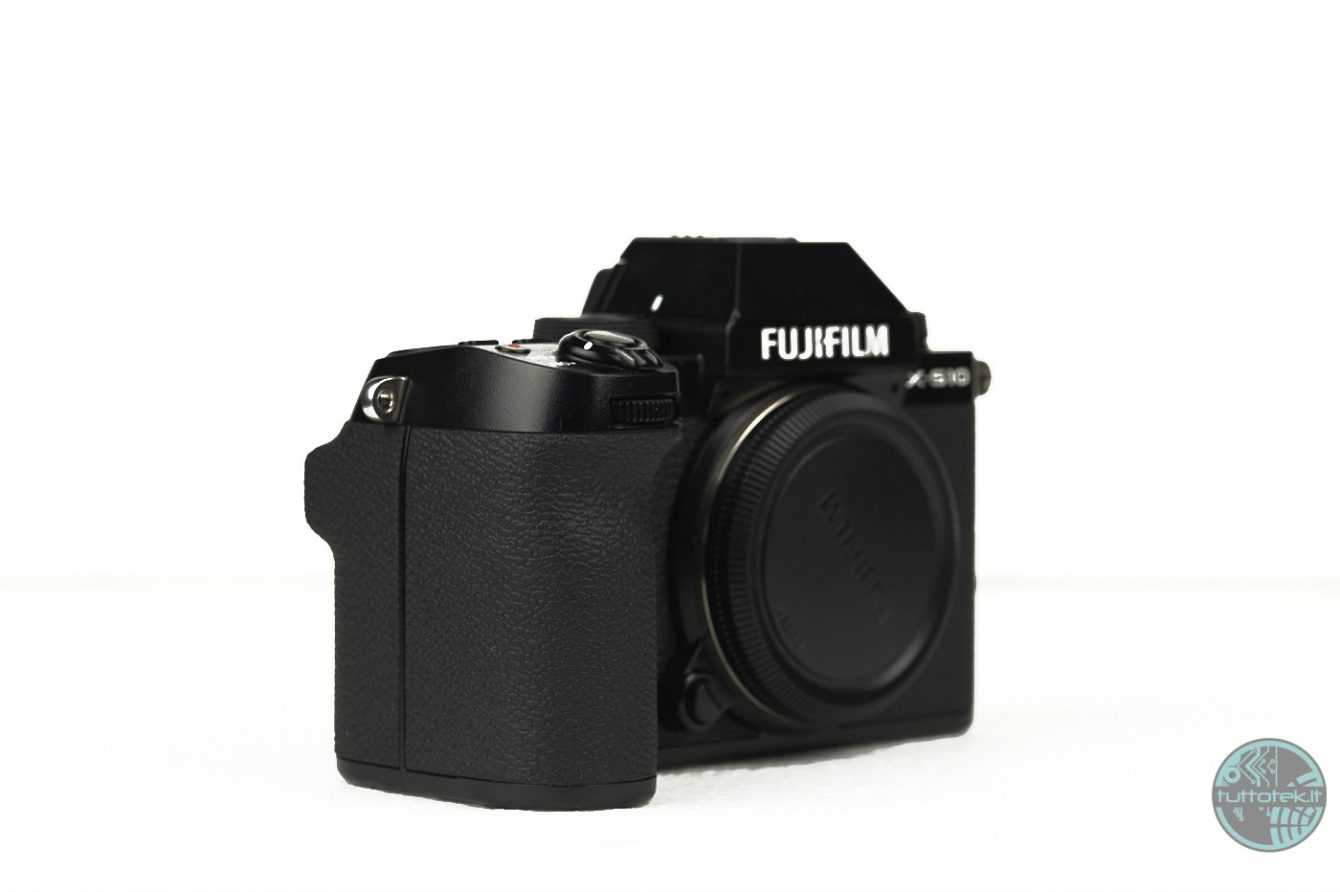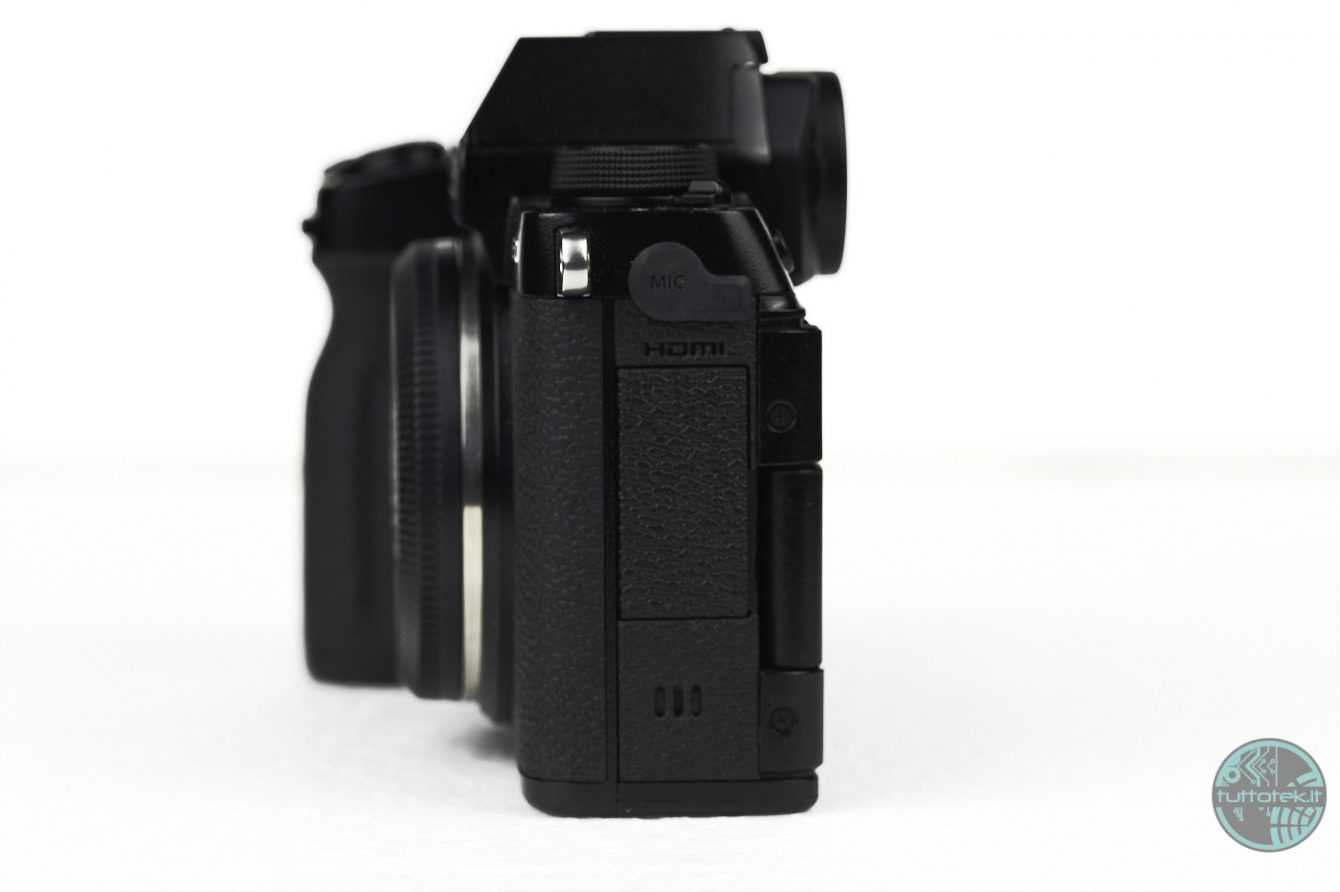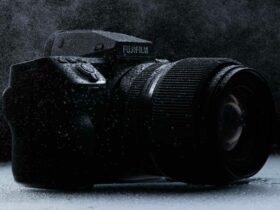Fujifilm is one of the historical camera manufacturers, and now it has changed everything with the S series, in the review we discover Fujifilm X-S10 a body different from the usual Fujifilm, and for this extremely interesting
We are faced with a car that takes the best of X-T4 and compacts it into a brand new body. Fujifilm X-S10 it is in fact very light, satisfying to use and with a purely semi-pro heart without sacrificing stabilization. This is the third Fujifilm aps-C camera to offer the on-sensor stabilizer, for this review we tried pairing with the Fujifilm XF 10-24mm f / 4 R OIS, and Fujifilm XF 35mm f / 2 R WR, Fujifilm XF 56mm lenses. f / 1.2 R APD, Fujifilm XF 90mm f / 2 R LM WR and Fujifilm XF 50-140mm f / 2.8 R LM OIS WR.
Technical features | Fujifilm X-S10 review
The Fujifilm X-S10 is a 26.1 megapixels APS-C (1.5x) sensor mirrorless camera manufactured from 2020. The sensitivity range, including extension, is ISO 80 – 51200 and can shoot in bursts of 20 FPS x 20 RAW, 79 JPEG. The detailed specifications are as follows:
- Sensor Format: APS-C
- Resolution: 26.1 Mpx
- ISO sensitivity: 80-51200 (including extension)
- File formats: RAW, JPG
- Shutter speeds: 900 ″ – 1/32000
- Exposure Compensation: +/- 5 stops
- Exposure mode: M, S, A, P, Scene
- Types of light meters: Multi-Area, Semi-Spot, Spot
- Mount: Fujifilm X
- Stabilization: Yes
- Autofocus (n. Aree AF): 425
- Live View: Si
- Anti-dust: Yes
- Video mode: 4k @ 30fps
- WiFi: Yes
- GPS: No
- USB: Si – Type-C
- Touchscreen: Yes
- Display: 3.0″, 1.04 Mdots, 720 x 480 pixels, articolato
- Viewfinder: Electronic, coverage 100%, 0.93x
- Built-in flash: yes
- Memoria: SD, SDHC, SDXC (UHS-II)
- Shutter: Mechanical and Electronic
- Battery: Li-Ion. Fujifilm NP-W126S
- Film simulation: 18 modes (PROVIA / Standard, Velvia / Vivid, ASTIA / Soft, Classic Chrome, PRO Neg.Hi, PRO Neg.Std,
Monochrome, Monochrome + Y Filter, Monochrome + R Filter, Monochrome + G Filter, Sepia, ACROS,
ACROS + Y filter, ACROS + R filter, ACROS + G filter, ETERNA / Cinema, Classic Neg, ETERNA BLEACH BYPASS)
Monochromatic Color
Camera body | Fujifilm X-S10 review
Fujifilm X-S10 is a semi-professional end camera body that inherits a lot from the X-T4. In fact, it was born as a separate series, precisely the “S” series, and is placed as a cross between the X-T4 and the other non-stabilized bodies. Another distinctive feature compared to all other Fujifilm X-mount cameras is the absence of the classic “retro” style rings for a look that closely recalls the layouts used by other manufacturers. This design, which could make someone turn up their noses, is instead in our opinion a winner, especially for those who have never used Fuji, and for those who perhaps buy X-S10 as a body dedicated to video. The small size, combined with the articulated display, and the still very firm and ergonomic grip make X-S10 the perfect companion for long recording sessions without suffering from wrist pain.

In fact, we find everything you need for the video: microphone socket, headphone output (via Type-C, jack adapter included) and articulated screen. Obviously, given the band of X-S10 there is only one slot for memory cards. The touchscreen is implemented effectively, similar to what we saw on X-T4, with gestures, shutter and focus management, and the quick selection menu. This group of features makes the X-S10 easily controllable even without touching the dials. Precisely the rings are fewer than what we are used to seeing on Fujifilm bodies: only the classic rings that we find on other brands are present.

This obviously without forgetting the presence of the aperture selection on the lenses, typical of the Fuji X system. Also present in this body is the customization of the actions by pressing the two rings (front and rear). Excellent quality of the shutter button which, although not better than X-T4, manages to give an above average feel. The connection via Bluetooth and Wi-Fi Direct is very useful, which allows the camera to connect to the phone and be managed by the latter as well as quickly sending photos to the smartphone.
The battery present, the Fujifilm NP-W126S, manages to support the demands of the machine well, allowing a good number of shots. The only drawback? We do not have a charger included in the package but only the Type-C cable, however, the recharge can be done either from a PC or using the smartphone charger. Finally, the viewfinder, perfect in colors and reactivity, however, we would have liked a larger viewfinder.
The stabilizer | Fujifilm X-S10 review
The APS-C X-Trans CMOS IV sensor (already seen on X-T4) remains with the X-S10, equipped with an innovative in-body image stabilization (IBIS) system new design, designed to contain weight and space, which declares as many as 6 stabilization stops with much smaller dimensions than the system seen on X-T4. All this, in the field, translates into a stabilization system as effective as that of the X-T4 which, especially in video, manages to offer the best of itself. As already said in the past, the blur will never be the fault of the camera but of the photographer who, in some cases, will have made a mistake in setting the shutter speed for moving subjects!

Focus, Burst and Shutter System | Fujifilm X-S10 review
The autofocus module on board the X-S10 is a close relative of the one mounted on the X-T4, with 425 focus points which, thanks to the evolution of the management software and the enhancement of the processor that manages the focus, has very good performance, in line with X-T4. In practical use we have never encountered any problems, encountering some small uncertainties only in extremely low light conditions. As we were used to from previous models, we have the most electronic mechanical double shutter. The operating modes are as usual:
- Mechanical shutter
- Electronic shutter
- Electronically controlled first curtain
- Mechanical + electronic shutter
- Mechanical shutter + Electronically controlled first curtain
The mode we recommend you to use is “Mechanical + electronic shutter” in order to use the mechanical shutter for the “longer” times and the electronic shutter for the shorter times than 1/8000 and thus have all the advantages in terms of features offered. The performance on the “FPS” side in continuous shooting is similar to that of X-T4.

Video Features | Fujifilm X-S10 review
Fujifilm X-S10 has a very solid video part. Here are the video specifications of the camera:
- Video formats:
- MOV (MPEG-4 AVC/H.264, HEVC/H.265 Audio: Linear PCM / campionamento Stereo 24bit / 48KHz)
- MP4 (MPEG-4 AVC/H.264, Audio: AAC)
- Movie compression
- File size
- [DCI 4K(4096 x 2160)] 29.97p/25p/24p/23.98p 200Mbps/100Mbps 59.94p/50p: fino a circa 20min. 29
- [4K(3840 x 2160)] 29.97p / 25p / 24p / 23.98p 200Mbps / 100Mbps 59.94p / 50p: up to approx.20min. 29.97p / 25p / 24p / 23.98p: up to approx.30min
- [Full HD(2048 x 1080)] 59.94p/50p/29.97p/25p/24p/23.98p 200Mbps/100Mbps/50Mbps fino a circa 30min.
- [Full HD(1920 x 1080)] 59.94p/50p/29.97p/25p/24p/23.98p 200Mbps/100Mbps/50Mbps fino a circa 30min.
- [Full HD(1920 x 1080) High Speed rec.]
- 240p / 200p 200Mbps (recording) up to approx.3min.
- 120p / 100p 200Mbps (recording) up to approx.6min.
Compared to X-T4 we lose the content at 400Mbps and the recording in 4k at 60Fps: not bad given the big difference in the list price. Clearly this video sector is then accompanied by the ETERNA film simulation and the F-log. The Eternal simulation, expressly designed for video, returns an extremely workable file and has been our favorite choice on all occasions for ease of use. Excellent recording quality, perfectly in line with X-T4, splendid also in this case the integrated microphone: definitely above average in recording quality. A praise to the stabilization in video which, thanks to the lower weight compared to X-T4, manages to offer better performance with longer focal lengths: a pleasant surprise.
IQ Analysis | Fujifilm X-S10 review
The APS-C format is currently the most used by photographers equipped with interchangeable lens cameras, criticality of this format, compared to Full Frame and Medium Format, are the yield at high ISO and the incidence of diffraction in photos. We had already analyzed this sensor during the X-T4 review, and we settle on the same level: higher than in the past, with surprising performance compared to the competition of the same format. We repeat it also in this review: in the APS-C panorama Fujifilm’s sensor is the best currently on the market. The result, in terms of file cleanliness, between ISO 160 and ISO 12800 is truly amazing.
Field test | Fujifilm X-S10 review
After studying the machine for a few days and becoming familiar with all its functions, we organized our test outings in order to cover the most common genres. In particular we have dealt with:
- Natural and urban landscape
- Reportage
- Portrait
Having used the camera in the field in such different genres helped us to fully understand its behavior and identify the strengths and weaknesses that we have exposed gradually during this review. Before going into the details of the individual genres, we want to dwell on how we post produced the shots.
Development with Capture One | Fujifilm X-S10 review
For the development of the RAW we used the latest version of Capture One available at the time of writing the review, the 21. We did not carry out an excessively heavy post production, we limited ourselves to a very basic use of the potential of Capture One to provide results that can be easily replicated by anyone. With a more accurate development of the RAW it will be possible to obtain better results. Precisely for this reason we leave you the RAW of the photos that we will attach to this review so that each of you can get an idea of the workability of the same. Regarding the development platform, we used the following hardware:
- CPU: AMD 2950X
- RAM: 64gb DDR4
- Motherboard: MSI X399 MEG Creator
- Video card: GTX 1080
- Monitor: Asus Pro Art PA248Q (2 monitor)
- Calibratore monitor: X-rite i1 Display Pro
We report that the Capture One software works perfectly in Fujifilm RAW without suffering from any of the problems that the forums were full of until a few years ago. The RAFs are always workable except for conspicuous exposure errors (lost shadows or lights) made directly during shooting due to the photographer’s inexperience. The software then manages to be, as per Capture One’s habit, always fast and responsive and with a highly customizable interface. Inside it there are all the color calibrations that the camera allows you to choose when shooting and, moreover, the settings with which we had taken the photo are preserved when the file is opened.
The work done by Fujifilm in collaboration with Phase One turns out to be perfect, making …















Leave a Reply
View Comments